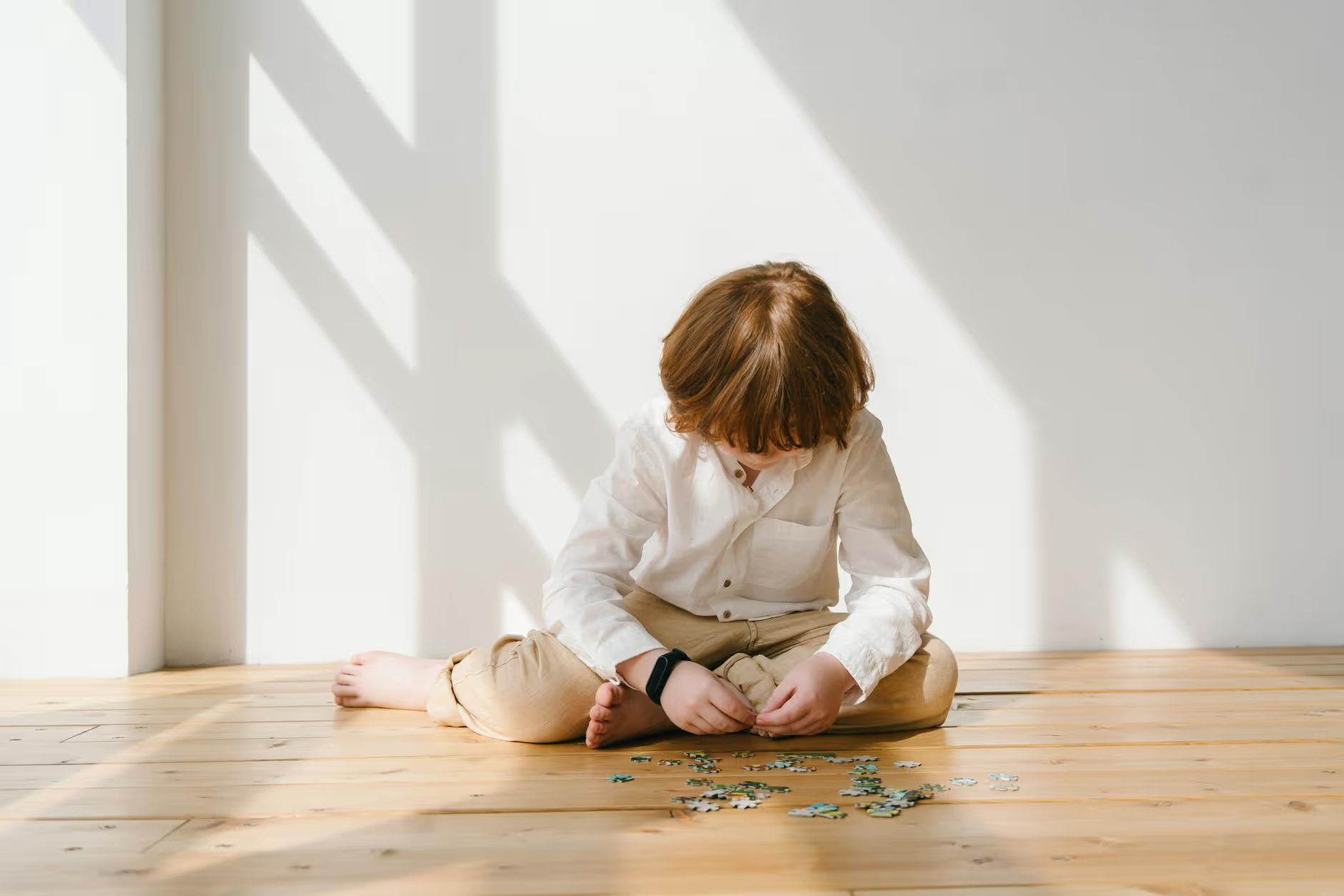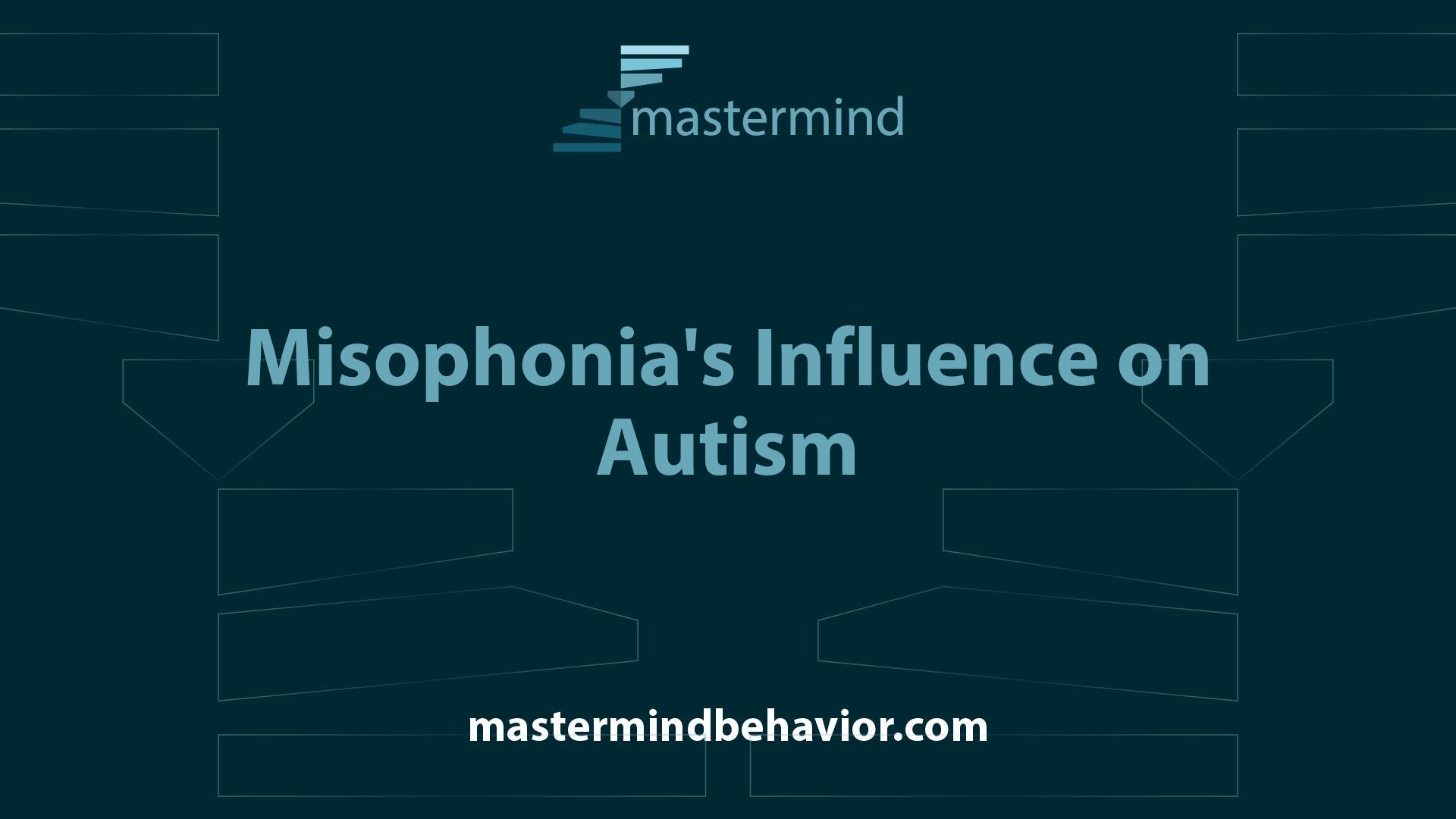Misophonia's Influence on Autism

Understanding Misophonia
Definition and Symptoms
Misophonia is a condition characterized by strong emotional reactions to specific trigger sounds. Individuals affected by misophonia often experience intense anger, anxiety, or distress when confronted with particular noises. Common trigger sounds include chewing, pen clicking, sniffing, and repetitive tapping [1]. This heightened sensitivity to auditory stimuli can lead to significant distress and discomfort in various situations.

Symptoms of misophonia can vary widely between individuals, but they commonly include:
SymptomsDescriptionEmotional DistressFeelings of anger or anxiety in response to trigger soundsAvoidance BehaviorActively avoiding situations or people to escape trigger soundsPhysical ReactionsIncreased heart rate, sweating, or tension when exposed to trigger sounds
Onset and Impact
Typically, misophonia emerges during the preteen to teen years. For many, the onset can disrupt daily life considerably, as individuals may feel compelled to avoid environments where these upsetting sounds are present. This could mean steering clear of gatherings with friends and family or frequently missing work and school [2].
Research indicates that approximately 1 in 5 individuals may experience misophonia at some point in their lives. Although it can develop at any age, the condition is often reported to initiate in early adolescence. Notably, studies show that misophonia is more prevalent among women and those assigned female at birth, with estimates suggesting that 55% to 83% of cases fall within this demographic.
Misophonia tends to intensify in conjunction with other neurodivergent conditions and mental health disorders, such as autism spectrum disorder (ASD), anxiety disorders, and obsessive-compulsive disorder (OCD). The condition affects both social interactions and overall well-being, making it essential to understand its implications for those who live with it.
Misophonia Triggers
Understanding the sounds that provoke a misophonic response is essential for managing this condition, particularly among individuals with autism. Misophonia is often characterized by adverse reactions to specific auditory stimuli, which can disrupt daily functioning.
Wide Range of Trigger Sounds
The sounds that can trigger misophonia vary widely from person to person. Initially, misophonia may begin in response to one specific noise, but over time, other sounds can elicit similar reactions. Common triggers include:
Trigger SoundsDescriptionChewing SoundsSounds made while eating or chewing food.Pen ClickingThe repetitive clicking of a pen or similar object.SniffingNoises made when clearing the nasal passages.Repetitive TappingSounds such as keyboard typing or pencil tapping.Throat ClearingThe act of clearing one’s throat.ScratchingSounds made by nails scratching a surface.
These auditory triggers can cause intense emotional and physiological responses, such as anger, anxiety, and distress [1].
Development of Additional Triggers
As misophonia progresses, it is common for individuals to develop new triggers beyond the initial ones. This phenomenon highlights the sensitivity of those with misophonia, especially in relation to acute sound processing.
Initially benign sounds may become sources of irritation, leading to a broader range of triggers. For some, mimicking the triggering sounds may help alleviate the distress they elicit.
In summary, recognizing and addressing the wide variety of sounds can significantly improve the quality of life for individuals dealing with misophonia, particularly those on the autism spectrum. The key to managing these triggers lies in awareness and proactive coping strategies.
Misophonia and Coexisting Conditions
Overlap with Anxiety Disorders
Individuals with misophonia often show a significant overlap with anxiety disorders. This condition, which leads to intense emotional and physical responses to specific sounds, can exacerbate feelings of anxiety. In fact, research has indicated that many people who experience misophonia also report heightened physiological signs of stress when exposed to trigger sounds. These can include increased sweating and heart rate.
ConditionPrevalence in MisophoniaNo other condition59%Anxiety DisordersCommonly coexistingAutismApproximately 3%
This table summarizes the relationship between misophonia and other conditions. Given the high levels of anxiety experienced, it is crucial for individuals to seek out effective coping strategies and interventions that address both misophonia and anxiety.
Connection to OCD and Tourette Syndrome
There is also a noted connection between misophonia and conditions such as Obsessive-Compulsive Disorder (OCD) and Tourette Syndrome. Individuals with misophonia may exhibit compulsive behaviors or obsessive thoughts related to sounds that trigger discomfort, common characteristics of OCD. Similarly, those with Tourette Syndrome, which is characterized by involuntary movements or sounds, may experience heightened sensitivity to certain noises and a corresponding distress [5].
Understanding the interactions among misophonia, OCD, and Tourette Syndrome is vital not only for proper diagnosis but also for developing effective treatment strategies. Addressing the specific ways these conditions overlap can lead to tailored support for individuals struggling with these challenges.
Misophonia and Autism
Shared Traits and Characteristics
Research indicates that individuals with misophonia exhibit traits commonly associated with autism. These traits include sensory sensitivity, emotional regulation difficulties, and variations in attention PubMed Central. The overlap in symptoms suggests that both conditions may share underlying mechanisms related to how individuals process sensory information and regulate their emotions. Autistic traits are found to be elevated in individuals with misophonia when compared to controls, highlighting this connection.
Specific traits that are commonly exhibited include:
TraitDescriptionSensory SensitivityIncreased sensitivity to sounds, lights, and textures.Emotional DysregulationGreater emotional reactivity, especially to negative feelings.Attention to DetailFocused attention on specific stimuli or details.Communication DifficultiesChallenges in social communication and interaction.ImaginationUnique or intense imaginative play or thought processes.
Children with misophonia aged 10-14 show significant emotional reactivity, reacting more intensely to negative emotions compared to their peers and experiencing longer durations of negative moods PubMed Central.
Prevalence Among Individuals with Autism
Misophonia is increasingly recognized as coexisting with autism. Studies suggest that children with misophonia display higher scores on autism-related scales compared to their peers without misophonia NCBI. This association suggests that misophonia may not merely be a coincidental co-occurrence, but part of a broader pattern of symptoms related to autism.
Study FindingsPercentageChildren with misophonia exhibiting autism traitsHigher than controlsEmotional reactivity in children with misophonia aged 10-14Greater than peers
Individuals who experience misophonia also demonstrate sensory hypersensitivity across multiple senses, reinforcing the notion that these two conditions may influence each other and complicate the individual's sensory experiences PubMed Central. The patterns observed in misophonia cases suggest that this condition could benefit from further consideration within the context of autism spectrum disorders.
Physiological Response to Misophonia
Understanding the physiological responses to misophonia is crucial, particularly in the context of autism. Misophonia can trigger significant brain activation and strongly influence emotional and physiological well-being.
Brain Activation and Misophonic Reactions
Research indicates that specific sound cues associated with misophonia activate various brain regions. These include the right insula, right anterior cingulate cortex, and right superior temporal cortex. This hyperconnectivity between the auditory and limbic systems suggests that misophonia triggers intense negative reactions. The brain's response to these sounds can lead to a heightened state of alertness and anxiety, making it difficult for individuals to cope with everyday auditory stimuli.
Brain Regions Activated by Misophonia
Brain RegionFunctionRight InsulaProcesses sound and emotional responsesRight Anterior Cingulate CortexInvolved in emotion regulationRight Superior Temporal CortexRecognizes and interprets sounds
Impact on Emotional and Physiological Well-being
Individuals with misophonia often exhibit greater physiological signs of stress when exposed to trigger sounds. Common triggers include sounds related to eating and breathing, such as chewing, lip-smacking, and heavy breathing. This stress can manifest as increased heart rate and sweating, indicating a fight-or-flight response [5].
In addition to physical symptoms, misophonia is associated with emotional fluctuations and hypersensitivity to auditory stimuli. It can lead to significant distress and may affect social interactions and daily activities. Children with misophonia show heightened emotional reactivity and sensory hypersensitivity across multiple senses, further complicating their emotional landscape [6].
Emotional Reactions to Misophonia
Reaction TypeDescriptionIncreased AnxietyHeightened stress responseIrritabilityDifficulty managing emotional reactionsWithdrawalAvoidance of social situations
The intricate relationship between brain activation and emotional responses in individuals with misophonia highlights the complex nature of this condition, especially as it relates to those with autism. Understanding these physiological responses is essential for developing effective strategies for managing misophonia and improving overall quality of life.
Treating Misophonia
Misophonia management is essential for individuals experiencing significant distress from specific sounds. Various treatments can help mitigate the symptoms associated with misophonia, including Cognitive-Behavioral Therapy (CBT) and sound therapy.
Cognitive-Behavioral Therapy (CBT)
Cognitive-behavioral therapy has emerged as the most utilized and effective treatment for reducing misophonia symptoms. This form of therapy helps individuals modify their thought patterns and behaviors related to misophonic triggers. A randomized controlled trial demonstrated that group-based CBT significantly reduced misophonia severity compared to a waitlist control [7]. The benefits of CBT not only manifested during treatment but also maintained at a one-year follow-up.
CBT focuses on helping individuals identify negative thought patterns and teaches coping mechanisms to manage responses to triggering sounds. The structure of CBT may involve:
CBT ComponentsDescriptionIdentification of TriggersRecognizing specific sounds that provoke misophonic reactionsCognitive RestructuringChanging distorted thought patterns about triggering soundsBehavioral InterventionsImplementing techniques to alter responses to triggersExposure ExercisesGradually exposing individuals to trigger sounds in a controlled environment
Sound Therapy and Coping Strategies
Sound therapy is another promising approach in addressing misophonia. This technique aims to desensitize individuals to triggering sounds over time. Through gradual exposure to these sounds, individuals can learn to reduce their emotional and physiological responses to misophonia. In many cases, sound therapy involves listening to white noise or other calming sounds to create a more tolerable auditory environment.
Additional coping strategies include:
Coping StrategiesDescriptionRelaxation TechniquesUtilizing deep breathing, mindfulness, or meditation to calm anxietyNoise-Canceling DevicesEmploying headphones or earplugs to block out triggering soundsBehavioral ModificationsAdjusting environments or routines to minimize exposure to triggers
Living with misophonia can be challenging, especially for individuals with autism. Treatments focusing on emotional regulation and sound desensitization can improve quality of life, enabling individuals to manage their responses effectively while navigating social interactions and daily activities [1].
References
[2]:
[3]:
[4]:
[5]:
[6]:
[7]:
Recent articles

How Collaborative Care Models Enhance ABA Therapy Outcomes
Transforming ABA Therapy Through Unified, Multidisciplinary Approaches

How ABA Therapy Supports Academic Success for Children with Autism
Unlocking Potential: How ABA Drives Academic Achievements in Children with Autism

How Community-Based ABA Therapy Encourages Real-World Skill Application
Bridging Therapy and Daily Life: The Impact of Community-Based ABA

The Importance of ABA Therapy in Strengthening Family Communication
Building Bridges: How ABA Therapy Enhances Family Bonds

How ABA Therapy Can Help Children with Autism Navigate Social Norms
Empowering Social Success: An Insight into ABA Therapy for Autism

Developing a Routine for Children with ASD to Promote Functional Skills
Creating Predictable Daily Structures for Autism Support


